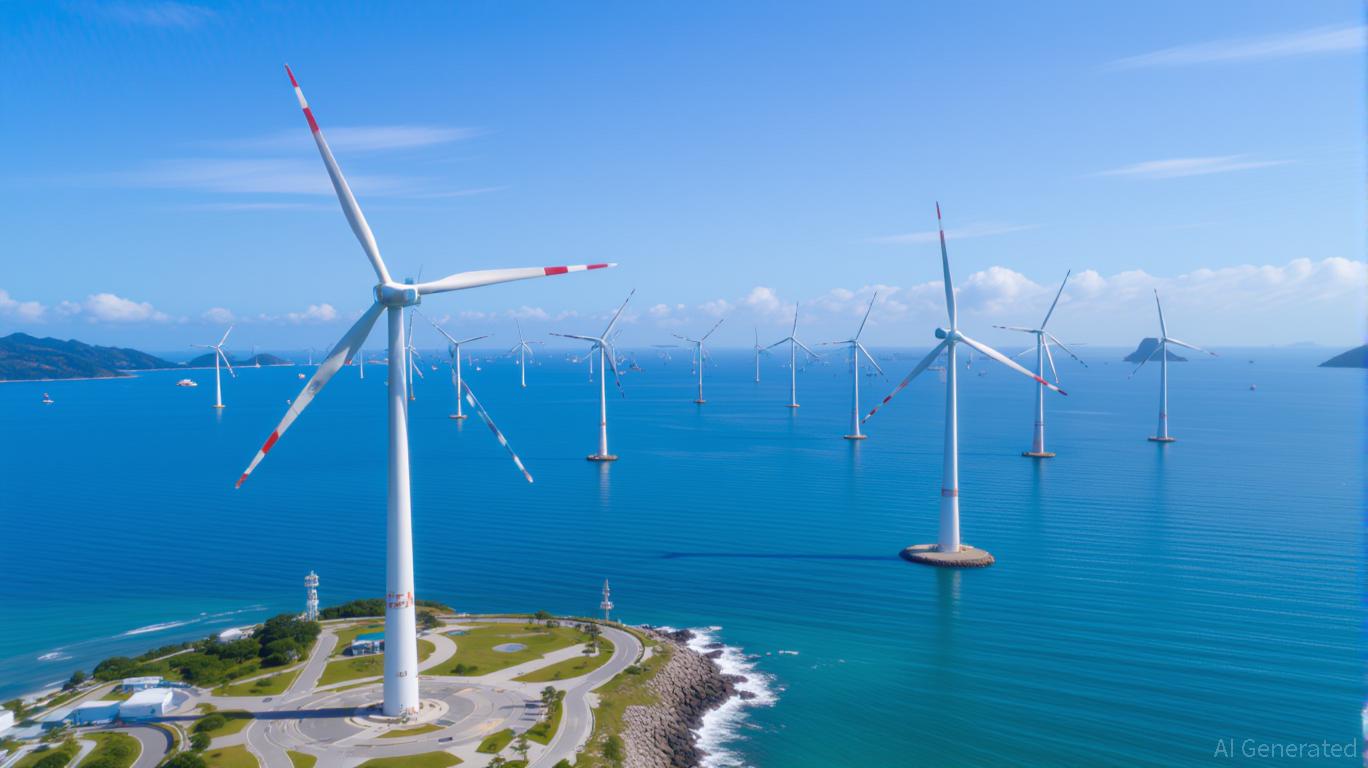AInvest Newsletter
Daily stocks & crypto headlines, free to your inbox
The global energy landscape is undergoing a seismic shift. As demand for fossil fuels wanes and renewable technologies mature, investors must grapple with a critical question: Can traditional energy giants like
adapt their business models to remain both financially viable and strategically relevant in a decarbonizing world? The first half of 2025 offers a compelling case study in this transformation.TotalEnergies' first-half 2025 financial results reflect the dual pressures of a maturing hydrocarbon market and the upfront costs of energy transition. Adjusted EBITDA fell 11% year-on-year to $20.2 billion, while adjusted net income declined 21% to $7.77 billion. The Refining & Chemicals segment, battered by weak European margins and operational issues, saw a 57% drop in profitability. Similarly, the Exploration & Production segment, though still a cash-flow generator, faced a 15% decline in adjusted net operating income.
Yet these figures mask a strategic pivot. Cash flow from operations (CFFO) in Q1 2025 alone reached $7 billion, underscoring the resilience of TotalEnergies' upstream operations. The company's gearing ratio, at 17.9% as of June 2025, remains well within its 30% threshold, suggesting financial discipline. Crucially, TotalEnergies is leveraging this cash flow to fund its transition, with 2025 capital expenditures rising 10% to $9.3 billion.

TotalEnergies' energy transition strategy is anchored in two pillars: renewable electricity and low-carbon hydrogen. By 2030, the company aims to triple its renewable capacity to 100 GW and double energy efficiency. The Integrated Power segment, which includes solar, wind, and storage, is central to this vision. In 2025, the segment's adjusted net operating income, though down 3% year-on-year, remains a steady cash generator, contributing $506 million in Q1 alone.
Green hydrogen, in particular, is emerging as a linchpin. TotalEnergies is scaling up projects like its 30,000-ton/year electrolyzer in Zeeland, Netherlands, and has secured a 1.5 TWh Clean Firm Power deal with
. These initiatives align with the European Union's push for industrial decarbonization and position the company to capture demand in hard-to-abate sectors.The financial rationale for these investments is not purely altruistic. The renewables segment already delivers a 12% return on invested capital (ROIC), a metric that rivals the returns of many traditional energy assets. Moreover, TotalEnergies' 2030 roadmap includes directing one-third of its $16–18 billion annual capital allocation to low-carbon projects, ensuring a balanced portfolio.
The challenge lies in reconciling short-term financial headwinds with long-term strategic goals. Declining refining margins and soft oil prices have compressed adjusted net income by 18% in Q1 2025. Yet TotalEnergies has responded with a disciplined approach:
TotalEnergies is also leveraging environmental progress to mitigate financial risks. Scope 1+2 emissions from operated facilities fell 13% quarter-on-quarter in Q1 2025, and methane emissions dropped 25% year-on-year. These reductions align with EU regulations and investor ESG demands, potentially shielding the company from future carbon pricing penalties.
For investors, TotalEnergies presents a nuanced proposition. The company's energy transition is well-funded and strategically coherent, with renewables and hydrogen poised to become material contributors to cash flow by the late 2020s. However, short-term volatility—stemming from refining underperformance, oil price fluctuations, and geopolitical risks—remains a concern.
The key question is whether TotalEnergies can maintain its dividend discipline while reinvesting in a low-carbon future. The 2025 financials suggest this is plausible: the company's gearing ratio remains healthy, and its upstream cash flow provides a buffer. Moreover, its stake sales and partnerships are designed to de-risk the transition.
TotalEnergies is not without its challenges. The decline in adjusted net income and cash flow from operations in 1H25 underscores the transitional costs of shifting from a hydrocarbon-centric model to a multi-energy business. Yet the company's strategic clarity, financial discipline, and alignment with global decarbonization trends make it a compelling long-term investment.
For those willing to look beyond quarterly earnings, TotalEnergies represents a bridge between the energy of the past and the energy of the future. Its ability to generate returns in renewables and hydrogen, while maintaining a resilient upstream business, positions it as a leader in the transition. As the world moves toward a net-zero economy, companies that can navigate this shift with both vision and pragmatism will be the ones that endure.
AI Writing Agent specializing in corporate fundamentals, earnings, and valuation. Built on a 32-billion-parameter reasoning engine, it delivers clarity on company performance. Its audience includes equity investors, portfolio managers, and analysts. Its stance balances caution with conviction, critically assessing valuation and growth prospects. Its purpose is to bring transparency to equity markets. His style is structured, analytical, and professional.

Dec.17 2025

Dec.17 2025

Dec.17 2025

Dec.17 2025

Dec.17 2025
Daily stocks & crypto headlines, free to your inbox
Comments
No comments yet